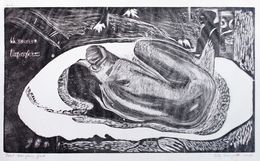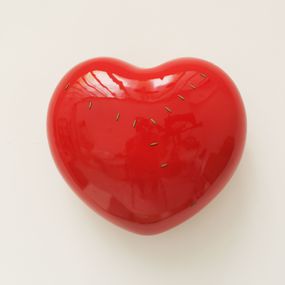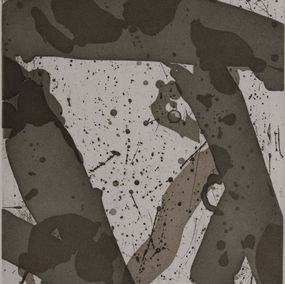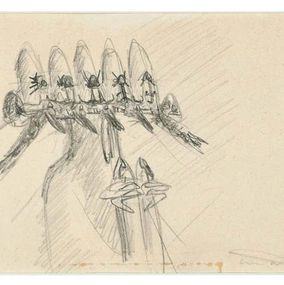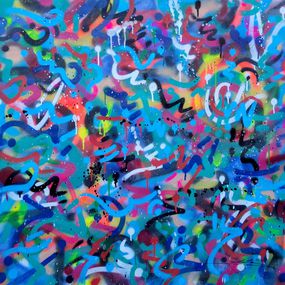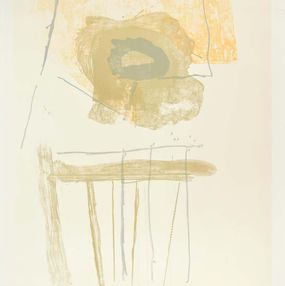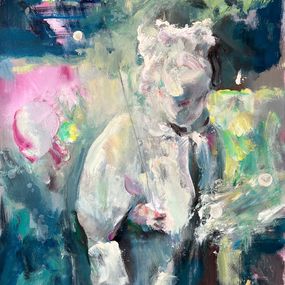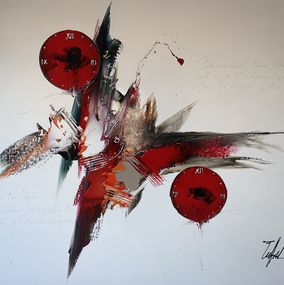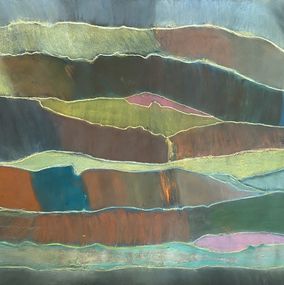
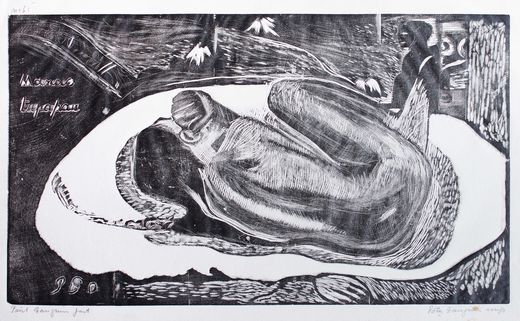
I close my eyes in order to see.
Biography
Paul Gauguin is a major painter of the 19th century. A precursor of modern art, his works today have enormous value on the art market. His painting "When are you getting married" is one of the most expensive in the world. It was sold for almost $ 300 million.
Yet he lives broke and in misery much of his life. Born in Paris in 1848, he moved early to Lima with his family. The exotic seduced him, and even guided his artistic inspiration and his personal choices throughout his life. He joined the navy at the age of 17, and continued the trip he loved so much to Latin America. He returned to France when his mother died, and met Gustave Arosa, a friend of the family, who introduced him to a new position as a banker, but also to painting ...
He met Mette-Sophie Gad whom he married in 1873, they had five children. Always thanks to Arrosa, he meets Pissarro, who introduces him to Impressionism. He also meets his dear friend Edgar Degas, one of the few people with whom his friendship will last.
Victim of the crash, he lost his job and decided to devote himself solely to painting. But the money wasted quickly, and he was forced to move to Denmark with his family. There, he doesn't feel out of place. He therefore returned to France with one of his sons, and managed to sell some paintings. His art is then rather well received. In 1886, it was one of the last Impressionist exhibitions before each supporter of the movement took its own direction.
Then follow one another's travels and encounters: in Brittany, Panama, Martinique… He learns the technique of "synthetism" and, like a stained-glass window, his canvases are made up of simple colored shapes outlined in black. Broke and sick, he returned to France, to Pont-Aven, then joined his friend Vincent Van Gogh in Arles.
Together, they lead a life of debauchery. Van Gogh advocates creation according to nature, and Gauguin according to his imagination. The two radically opposed friends quarreled regularly, until the tragic night of December 23, 1888 when Van Gogh threatened Paul Gauguin with a razor blade before turning the weapon against his own ear. Gauguin then decides to return to Paris.
He then left France for Tahiti, hoping to find there the primitive aspect he sought since his childhood. He is very disappointed when he arrives at Papetee. He rediscovers the Western behaviors he thought he was avoiding. It therefore joins the places further back. He meets new women. Often very young, they become his muses. He feels free, and finally leads the much sought-after lifestyle.
Sorely lacking in resources, he is nevertheless obliged to leave this El Dorado to return to Paris. He finds his decadent life, and a new mistress: Annah the Javanese. He loses many canvases maintained by his landlady, fights with sailors and is hospitalized for several weeks. When he returns to his workshop, everything is gone. His mistress took over all his things. Art critics are no longer receptive to his work, which increasingly breaks free from standards.
He returned one last time to Pont-Aven, a breeding ground for artists in Europe, to then return to Tahiti. Poor and sick, he then saw a life of settlers that he had nevertheless criticized so much. But he produced his most beautiful paintings, notably “Where do we come from, Who are we? Where are we going ? », Which he painted before his suicide attempt, and which sums up his life.
Inspired by prints and stained glass, his warm and colorful works depict the primitive world so admired by the artist. Gauguin, who totally rejects European standards, is in line with the painters of Symbolism, a movement influenced by the primitive African, Asian and Polynesian arts. They have been exhibited in the greatest institutions in the world: at MoMA in New York, at the Musée d'Orsay in Paris or at the National Gallery of Art in Washington.





